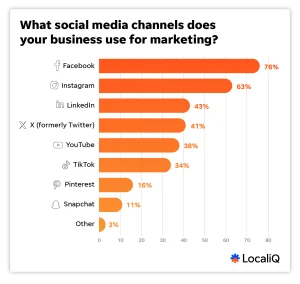Artificial intelligence is an innovative technology that can transform businesses. It can increase efficiency while opening up new revenue opportunities. Artificial intelligence allows organizations to make more accurate predictions and understand customer needs better.
Narrow AI may be familiar to you from everyday applications like self-driving cars and stock trading systems, where algorithms process information instantly.
Machine learning
AI can play a critical role in enterprises seeking to enhance performance and productivity, automating processes and making sense of data at a level no human could achieve. Furthermore, it creates personalized customer experiences while anticipating business outcomes to drive revenue growth.
Artificial Intelligence programs have reached human levels in performing extremely specific tasks such as medical diagnosis and computer search engines. Others can recognize images and carry out complex data analysis or writing and editing application code. Furthermore, AI programs may assist humans in areas that require human focus such as marketing, risk management, customer service or even customer retention.
Generative AI holds great promise, yet is still not ready to fully replace humans in software coding and IT processes. Instead, it should be seen more as part of a team effort than as an independent entity. Generative AI requires extensive training so it can learn from data to meet certain output criteria.
Natural language processing
Language Processing, commonly referred to as Natural Language Understanding (NLU), allows AI systems to understand human speech. This technology is employed in applications like Siri and Cortana to recognize voice commands from users and convert them into text or actions on computers – making technology interaction simpler for everyone.
NLU has been in use for decades, yet hasn’t reached the level of sophistication needed for true artificial intelligence. Still, NLU can prove useful in many business functions and may become more advanced over time.
AI is revolutionizing how businesses operate and compete. While AI won’t replace humans anytime soon, its tools are rapidly reorganizing labor and altering job skills. Startups such as Verneek are creating AI tools to enable non-programmers to make data-informed decisions quickly without being programmers themselves – such tools could reshape your workforce by replacing certain traditional roles while equipping employees with modest programming abilities to take on more complex work tasks.
Deep learning
Deep Learning (DL) is an artificial intelligence technique that uses neural networks to simulate human-brain-like functionality. It is part of machine learning, which forms part of artificial intelligence as a whole.
One of the primary applications for deep learning (DL) is computer vision, where it helps detect patterns in images. Other applications of DL include speech recognition and natural language processing; both applications use feedback loops to learn from past data and improve over time.
DL models tend to outshone traditional algorithms at certain tasks, yet require large volumes of data for them to work effectively. A good analogy for this would be the use of rocket ships: without powerful engines and sufficient fuel, the ship won’t reach orbit. A similar idea applies with regard to training DL algorithms – understanding their functionality as well as their relative advantages is essential in making informed decisions regarding them and other methods.
Explainability
With AI becoming ever more ubiquitous in workplace environments, organizations must be able to explain how their systems function to build trust with customers and users while mitigating risks. McKinsey research indicates that companies that prioritize digital trust experience revenue growth of at least 10% per year.
At the same time, it is crucial to recognize that stakeholders’ goals for explainability differ depending on their degrees of technical knowledge and understanding. Engineers may prioritize control while users and external stakeholders may prioritize transparency – leading to different understandings of what AI can achieve and unequal prioritization of stakeholder objectives.
Business value of understanding AI systems: Risk and legal teams can use this insight to make sure their systems comply with applicable laws, regulations, company policies and values, helping mitigate any ethical breaches that might occur within an organization.






More Stories
Social Media Strategies for Local Service Businesses: Stop Shouting, Start Connecting
Tech Career Paths for Non-Programming Professionals
Internet Privacy Tools Beyond Mainstream VPNs and Browsers